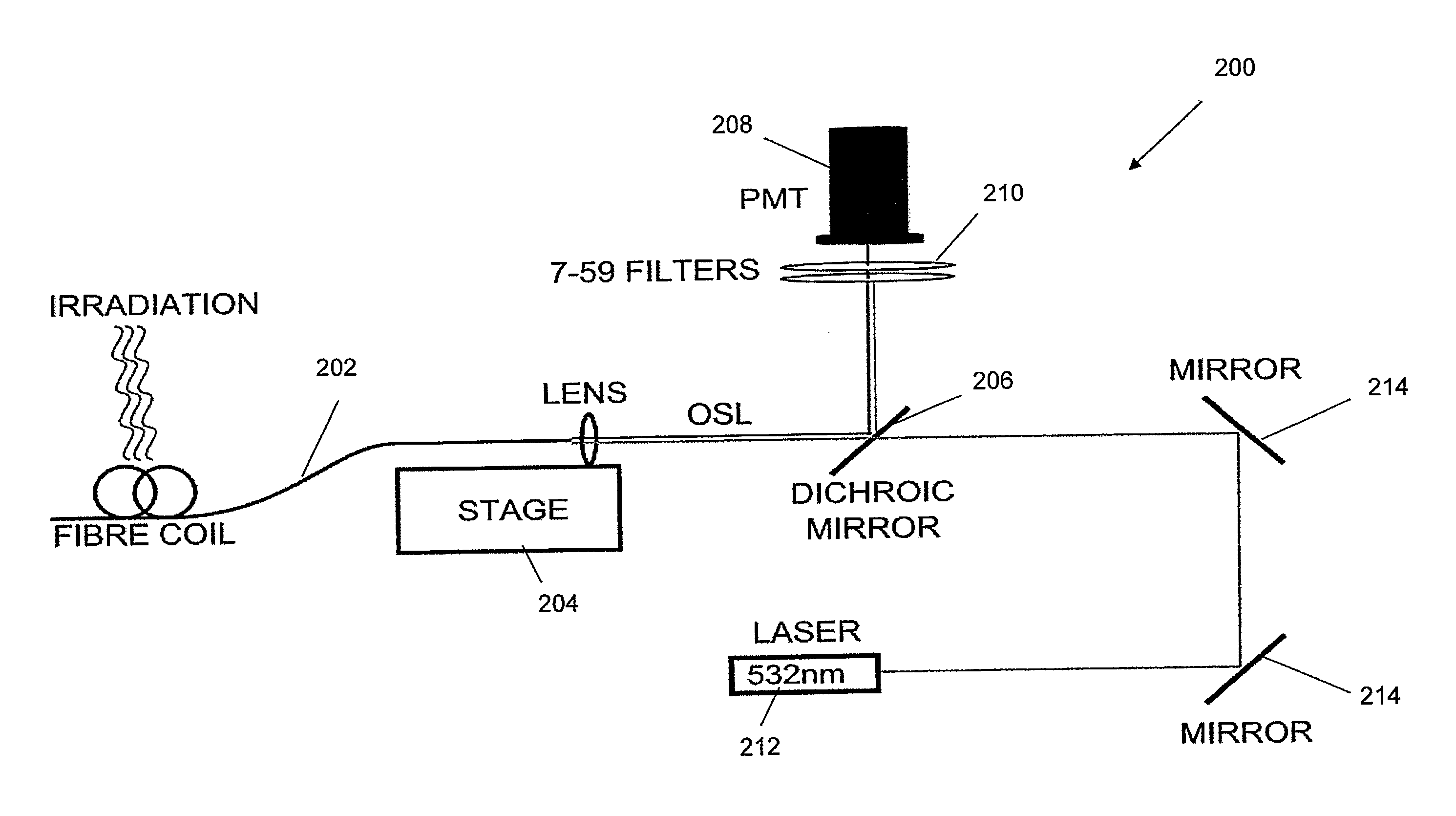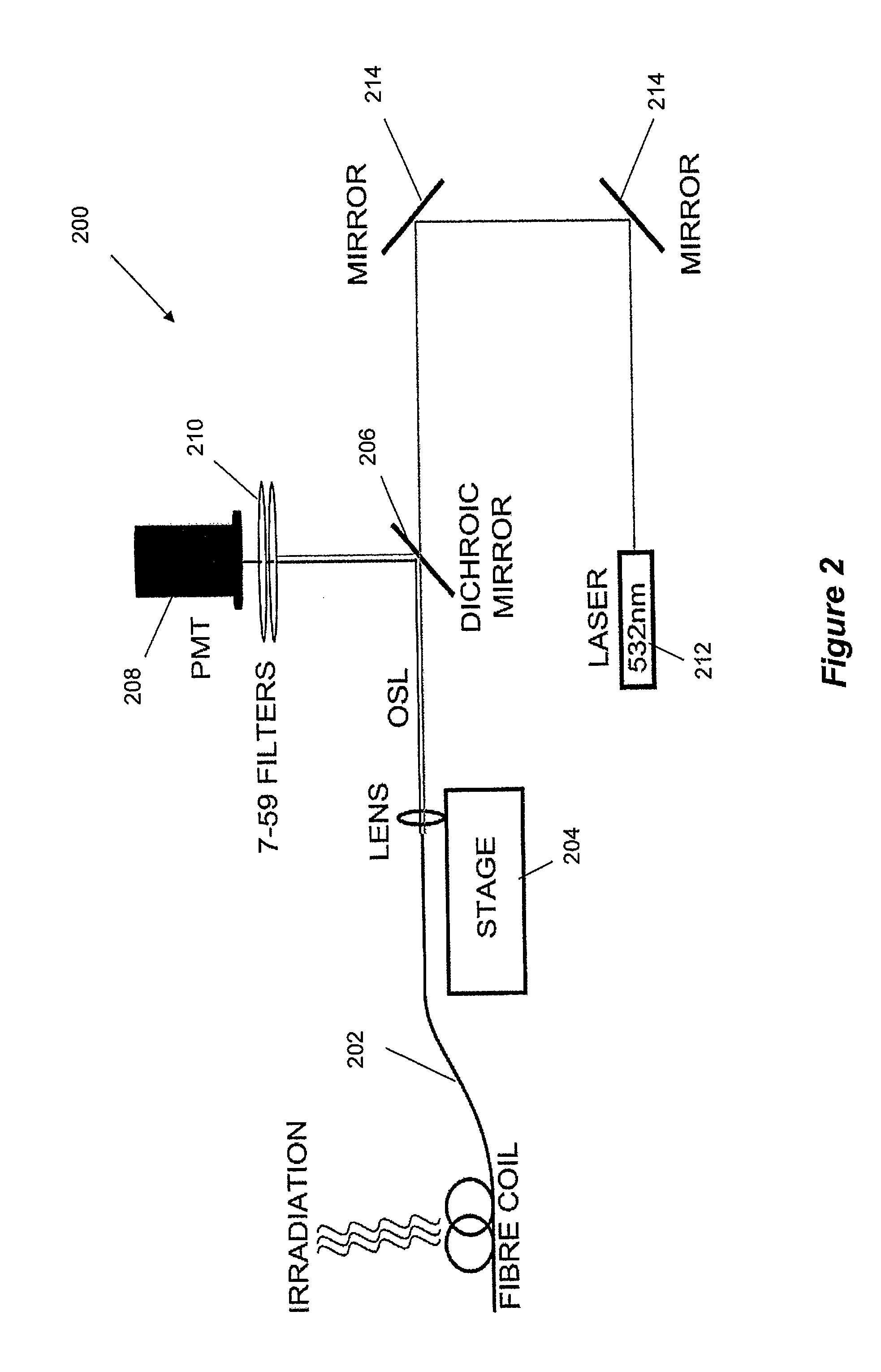Optical detector for detecting radiation
a radiation detection and optical detector technology, applied in the direction of x/gamma/cosmic radiation measurement, instruments, and dosimeters, can solve the problems of insufficient signal-to-noise ratio, unsuitable for low-dose environmental radiation detection, and low signal, etc., to achieve short bleaching time, short bleaching time of optical detectors, and fast repetitive measurements
- Summary
- Abstract
- Description
- Claims
- Application Information
AI Technical Summary
Benefits of technology
Problems solved by technology
Method used
Image
Examples
Embodiment Construction
[0032]Optically Stimulated Luminescence (OSL) can be used to detect ionizing radiation, such a β-radiation or other suitable types of ionizing radiation. An OSL material is exposed to the radiation, which generates electron-hole pairs in the OSL material. The electron-hole pairs are trapped at defects in the OSL material and stimulating light of a suitable wavelength can be used to initiate recombination of the electron-hole pairs, which results in emission of luminescence radiation. The time integrated OSL intensity is dependent on the radiation dose and consequently OSL can be used to detect ionizing radiation quantitatively.
[0033]Referring now to FIGS. 1 and 2, an optical detector for detecting such ionizing radiation in accordance with a specific embodiment is now described. FIG. 1 shows a schematic of the optical detector 100 comprising an optical fiber 102. The optical fiber 102 is in use exposed to the ionizing radiation 104 and comprises an OSL material. Laser light from las...
PUM
 Login to View More
Login to View More Abstract
Description
Claims
Application Information
 Login to View More
Login to View More - R&D
- Intellectual Property
- Life Sciences
- Materials
- Tech Scout
- Unparalleled Data Quality
- Higher Quality Content
- 60% Fewer Hallucinations
Browse by: Latest US Patents, China's latest patents, Technical Efficacy Thesaurus, Application Domain, Technology Topic, Popular Technical Reports.
© 2025 PatSnap. All rights reserved.Legal|Privacy policy|Modern Slavery Act Transparency Statement|Sitemap|About US| Contact US: help@patsnap.com



